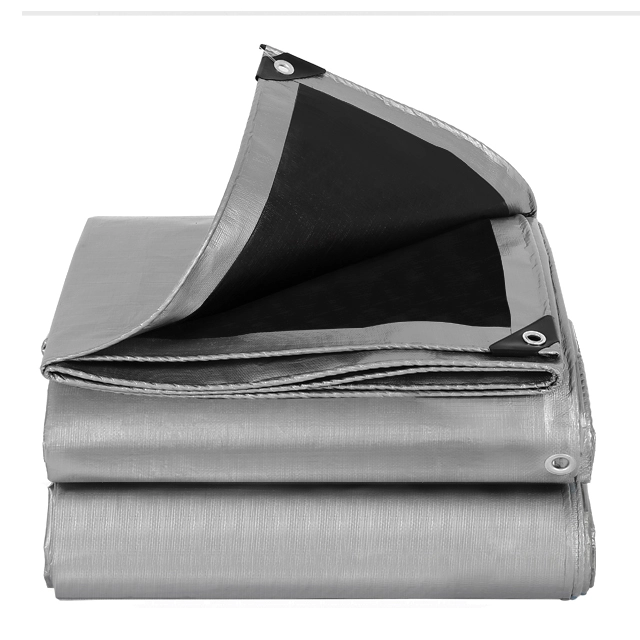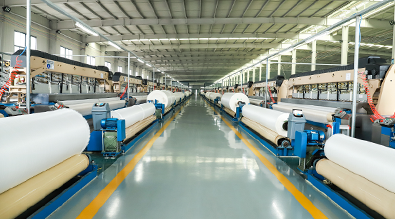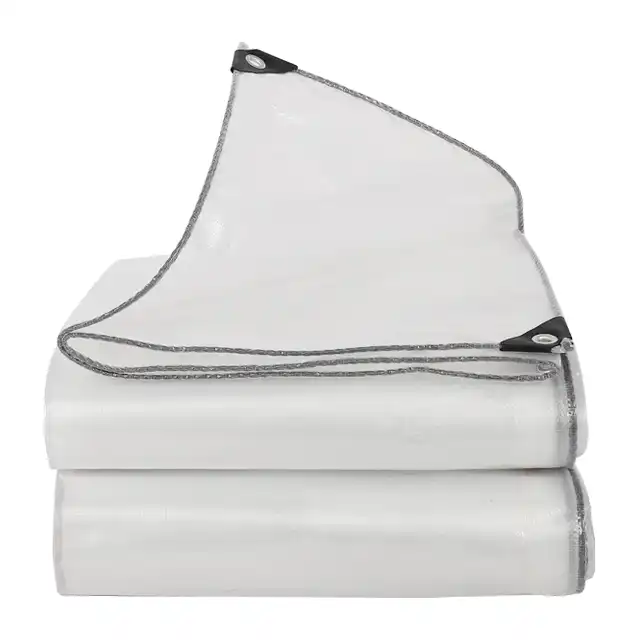Recommended Tarpaulins for Home Use: A Buying Guide
Have you ever watched helplessly as rain soaked through your patio furniture, or scrambled to find something durable enough to protect your garden equipment from harsh weather? Choosing the right home tarpaulin can feel overwhelming with countless options available, but making an informed decision will save you both money and frustration. This comprehensive guide will walk you through everything you need to know about selecting the perfect home tarpaulin for your specific needs, from understanding material quality to identifying the features that truly matter for residential applications.
Understanding Home Tarpaulin Materials and Construction

When selecting a home tarpaulin, the material composition serves as the foundation for performance and longevity. Polyethylene tarpaulins have emerged as the most popular choice for residential use, offering an exceptional balance between affordability and functionality. These tarps are manufactured using high-density polyethylene fibers that are tightly woven into a durable fabric, then laminated on both sides to create a waterproof barrier. The construction process matters significantly because it determines how well your home tarpaulin will withstand daily wear and environmental stress. Quality manufacturers utilize HDPE woven fabric combined with LDPE coating to produce tarps that resist tearing, UV degradation, and water penetration simultaneously. The weight specification of your home tarpaulin directly correlates with its durability and intended applications. For most residential needs, tarps ranging from 65gsm to 280gsm provide adequate protection, with middle-duty options between 100gsm and 180gsm being ideal for general home use. The thickness measurement, typically expressed in mils, offers another crucial indicator of tarp strength. A 7 to 12 mil thickness works well for protecting outdoor furniture, covering vehicles, and shielding garden areas from weather elements. Understanding these specifications helps you avoid purchasing either an unnecessarily heavy tarp for simple tasks or a flimsy option that fails when you need it most.
-
Key Features That Define Quality Home Tarpaulins
Superior home tarpaulin products incorporate several essential features that distinguish them from inferior alternatives. UV protection stands as one of the most critical characteristics, especially for tarps that will face prolonged sun exposure. High-strength yarn treated with UV inhibitors provides protection levels ranging from 1% to 7%, effectively preventing the harmful degradation that sunlight causes over time. This treatment extends the lifespan of your home tarpaulin significantly, maintaining both its structural integrity and color vibrancy even after years of outdoor use. Without proper UV treatment, even the most expensive tarp will become brittle and fail prematurely. Waterproofing capabilities represent another non-negotiable feature for home tarpaulin applications. True waterproof tarps undergo specialized coating processes that create an impermeable barrier against moisture, unlike water-resistant products that may eventually allow seepage. The lamination process used in quality polyethylene tarps ensures that water beads up and rolls off the surface rather than penetrating through to damage your protected items. Additionally, reinforced edges and corners with heat-sealed hems prevent the common failure points where cheaper tarps begin to tear and unravel. These reinforcements, combined with rust-resistant grommets spaced at regular intervals, allow for secure tie-down options that keep your home tarpaulin firmly in place during windy conditions.
Sizing and Color Considerations for Home Applications
Determining the correct size for your home tarpaulin requires careful measurement and consideration of your specific coverage needs. Many homeowners make the mistake of purchasing tarps that barely cover their intended targets, leading to exposure at the edges where water and debris can still cause damage. A good rule involves adding at least 12 to 24 inches beyond your actual coverage area to allow for proper draping and secure tie-down points. Modern manufacturing capabilities enable custom sizing options, with some facilities offering widths up to 5.1 meters without seams, which eliminates potential weak points and leak paths that occur where separate sections join together. Color selection for your home tarpaulin impacts both aesthetic appeal and functional performance in ways that many buyers overlook. Different colors serve distinct purposes beyond mere appearance preferences. Silver and white tarps reflect sunlight effectively, keeping covered items cooler and providing excellent UV protection, making them ideal for vehicle covers and outdoor furniture protection. Blue and green options offer moderate UV protection while blending naturally into garden and yard environments. The available color options typically include any shade you might require, allowing you to coordinate with your home's exterior or choose high-visibility colors for safety applications where the tarp needs to be easily noticed.
-
Matching Tarp Specifications to Common Home Uses
Understanding how different home tarpaulin specifications align with typical residential applications helps you make targeted purchasing decisions. For packing materials and protecting stored goods in garages or sheds, lighter-weight tarps between 100gsm and 120gsm provide sufficient protection against dust and moisture while remaining easy to handle and fold for storage. These same specifications work well for covering woodpiles, creating temporary sun shade structures, or protecting garden beds from early frost. The flexibility and manageable weight of these tarps make them practical for frequent repositioning and seasonal adjustments. Heavier-duty home tarpaulin options ranging from 150gsm to 180gsm excel in more demanding residential scenarios. Truck covers, car canopies, and long-term outdoor equipment protection require the enhanced tear resistance and durability that higher GSM ratings provide. These robust tarps withstand the stress of securing loads during transportation, resist damage from sharp corners or rough surfaces, and maintain their protective qualities through multiple seasons of use. For homeowners with boats, RVs, or agricultural equipment on their property, investing in heavier-grade home tarpaulin products prevents the frustration and expense of premature replacement. The arctic flexibility feature ensures these tarps remain pliable even in freezing temperatures, preventing the cracking and brittleness that plague inferior products during winter months.
Essential Quality Standards and Certifications
Purchasing home tarpaulin products from manufacturers who adhere to recognized quality standards provides assurance that your investment will perform as expected. ISO 9001:2015 certification indicates that a manufacturer maintains comprehensive quality management systems throughout their production process, from raw material selection through final product testing. This certification isn't merely a formality—it represents a commitment to consistent quality control, continuous improvement, and customer satisfaction that directly affects the reliability of every home tarpaulin that leaves the facility. Third-party testing laboratory reports offer additional verification of product specifications, confirming that advertised features like waterproofing, tear resistance, and UV protection meet measurable performance benchmarks. The reputation that manufacturers build over years of serving both domestic and international markets speaks volumes about product quality. Companies with partnerships involving major international organizations demonstrate their ability to meet rigorous standards and deliver consistent quality across large-scale orders. For residential buyers, this track record translates into confidence that your home tarpaulin will perform reliably whether you're protecting a few pieces of furniture or covering an entire outdoor workspace. The accumulated feedback from thousands of satisfied customers provides more reliable guidance than marketing claims alone, especially when these customers include demanding institutional buyers who depend on tarp performance for critical applications.
-
Innovative Features and Product Development
Modern home tarpaulin manufacturing incorporates ongoing research and development that brings enhanced functionality to residential users. Recent innovations include fire-prevention treatments that make certain tarp varieties suitable for use near potential ignition sources, expanding their safe application range. Advanced waterproofing technologies have improved to the point where quality tarps maintain complete impermeability even under sustained heavy rainfall or when covering items in direct contact with wet ground. These developments stem from manufacturers investing in high-level research teams who work continuously to address real-world challenges that users face. The development of ultra-wide width braiding machines has revolutionized home tarpaulin production by enabling the creation of seamless tarps in widths up to five meters. This technological advancement eliminates the weak points and potential leak paths associated with joined sections, providing superior protection for large coverage areas. For homeowners needing to cover wide patios, multiple vehicles, or extensive garden areas, these seamless wide-format tarps offer convenience and reliability that older segmented products cannot match. The combination of traditional material science with modern manufacturing technology continues to push the boundaries of what quality home tarpaulin products can achieve.
Practical Applications Around Your Home
The versatility of quality home tarpaulin products extends across numerous residential scenarios, making them one of the most practical investments for property maintenance. Garden and landscaping applications benefit immensely from the protective qualities of well-chosen tarps. Whether you're creating shade structures for delicate plants during intense summer heat, protecting established beds from unexpected frost, or covering compost areas to maintain optimal moisture levels, the right home tarpaulin makes these tasks simpler and more effective. The waterproof nature combined with UV resistance means your tarps won't degrade from constant exposure while protecting your plants from weather extremes. Vehicle and equipment protection represents another primary use case where home tarpaulin quality directly impacts results. Properly sized tarps shield cars, motorcycles, boats, and recreational vehicles from the damaging effects of prolonged sun exposure, acid rain, bird droppings, and tree sap. The breathability considerations matter here—quality polyethylene tarps allow sufficient air circulation to prevent the moisture buildup and mildew growth that can occur under completely sealed covers. For homeowners storing lawn equipment, power tools, or seasonal items outdoors, durable tarps provide cost-effective protection that extends equipment life and reduces maintenance requirements. The anti-corrosion and shrink-proof properties ensure that your stored items emerge from covered storage in the same condition they entered, regardless of seasonal temperature fluctuations.
-
Maintenance and Longevity Tips
Maximizing the lifespan of your home tarpaulin investment requires understanding proper care and storage practices. After each use, especially following exposure to dirt, leaves, or other debris, gently cleaning your tarp with water and mild soap prevents material degradation that accumulates over time. Avoid using harsh chemicals or abrasive cleaning tools that might damage the laminated coating or weaken the woven fabric structure. Once cleaned, allow the tarp to dry completely before folding and storing, as trapped moisture can promote mildew growth and material weakening even in synthetic tarps. Proper drying practices significantly extend usable life and maintain the waterproof integrity that makes your home tarpaulin effective. Storage conditions impact tarp longevity almost as much as usage patterns. Keep your home tarpaulin in a cool, dry location away from direct sunlight when not in use, as even UV-protected materials experience accelerated aging under constant sun exposure. Folding tarps loosely rather than creating tight, permanent creases helps maintain flexibility and prevents stress concentration at fold lines. When tarps develop small tears or holes, addressing these damages promptly with appropriate repair patches prevents minor issues from expanding into major failures. Quality manufacturers often provide repair kits or replacement grommet installation services that allow you to extend tarp life well beyond the typical replacement timeline for budget alternatives.
Conclusion
Selecting the ideal home tarpaulin involves balancing material quality, appropriate sizing, and feature specifications with your specific residential needs, ensuring long-term value and reliable performance across diverse applications.
Cooperate with Linyi Shengde Plastic Co., Ltd.
When you're ready to invest in High Quality home tarpaulin that delivers lasting protection, partnering with an established China home tarpaulin manufacturer ensures you receive products backed by decades of expertise and proven performance. As a leading China home tarpaulin factory and China home tarpaulin supplier, Linyi Shengde Plastic Co., Ltd. has served residential and commercial customers worldwide since 2003, building an unshakeable reputation for quality and reliability. Our ISO 9001:2015 certification and partnerships with major international organizations demonstrate our commitment to manufacturing excellence. Whether you need China home tarpaulin wholesale quantities or individual home tarpaulin for sale with competitive home tarpaulin price points, our extensive production capabilities—including over 400 automatic water-jet looms and advanced coating machinery—ensure we can meet your requirements precisely. Contact us today at info@shengdetarp.com to discuss your home protection needs and discover why thousands of customers trust our products for their most valuable assets. Save this guide for future reference when comparing options, and reach out whenever questions arise about selecting the perfect tarpaulin solution for your home.
References
1. Taylor, Glenda. "Tarp Selection and Testing for Home Protection Applications." Building Materials Review, 2024.
2. Johnson, Michael & Stevens, Patricia. "Polyethylene Tarpaulin Manufacturing: Quality Standards and Performance Metrics." Industrial Fabrics Technology, 2024.
3. Williams, Robert. "UV Protection and Weatherproofing in Modern Synthetic Tarps." Materials Science Quarterly, 2023.
4. Anderson, Jennifer. "Residential Applications of Heavy-Duty Protective Covers: A Comprehensive Analysis." Home Maintenance Journal, 2024.




